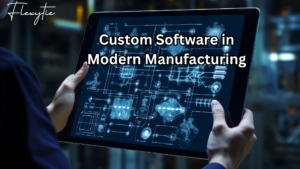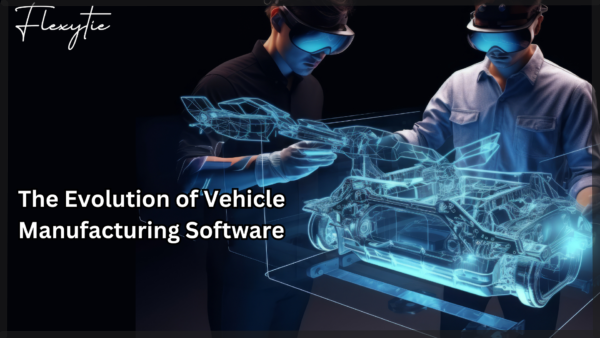Table of Contents Show
Vehicle manufacturing software has changed how cars are planned, constructed, and serviced over time. In the beginning, car makers depended on physical drawings and production lines. Nowadays, complex software solutions direct every phase — from idea to creation to post-purchase assistance. This shift occurred incrementally over time through meaningful tech innovations. Let’s look at this evolution up close.
CAD Systems in the 1960s
The advent of computer-aided design (CAD) systems represented the first major advance in vehicle manufacturing software. Pioneered in the early 1960s, these systems redefined traditional drafting techniques by enabling engineers to generate, adapt, and refine their designs digitally. With CAD, what once required weeks of manual labor could be accomplished in days or even hours. This innovation dramatically improved design speed and precision, with CAD software now allowing accurate calculations to minimize errors and enhance material usage. Additionally, CAD permitted easy storage and access of designs, improving collaboration across engineering teams and setting the foundation for more intricate and creative vehicle designs going forward.
ERP Systems in the 1990s
During the 1990s, the evolution of enterprise resource planning (ERP) systems dramatically transformed vehicle manufacturing operations. These systems were intended to unite all areas of manufacturing — from supply chain administration and inventory oversight to human resources and finances, into a single integrated framework. By consolidating data, ERP systems enabled a big-picture view of operations, empowering manufacturers to make informed decisions rapidly. This proved critical in managing the progressively elaborate logistics of automotive assembly. For example, connecting supply chain information assisted manufacturers in modifying production timelines based on material availability, thereby decreasing delays and streamlining inventory. ERP systems also promoted regulatory adherence and quality control by standardizing workflows across the organization, which was imperative as multinational automotive corporations entered diverse markets with varying legal guidelines.
The Rise of PLM in the 2000s
The 2000s saw the debut of product lifecycle management (PLM) software, which is built to govern every phase of a vehicle’s lifespan—from preliminary idea through retirement. PLM software promoted a comprehensive approach to vehicle manufacturing, enabling companies to refine processes and strengthen collaboration between departments. This was instrumental in removing redundancies and aligning all production stages. For instance, PLM systems permitted design teams to immediately relay real-time updates to manufacturing, so any design adjustments were instantly reflected on the production floor. This integration markedly enhanced manufacturability, elevated product quality by facilitating ongoing feedback, and radically shortened time-to-market for new models by ensuring all stakeholders were unified from the outset.
Today: IoT and AI
Presently, the integration of the Internet of Things (IoT) and artificial intelligence (AI) is redefining vehicle manufacturing. IoT devices embedded in manufacturing equipment and vehicles gather huge amounts of real-time data. This data provides critical insights into machine performance, production bottlenecks, and vehicle behavior across various contexts. AI complements this by processing the data to identify patterns and predict outcomes like potential equipment failures or maintenance needs before they induce stoppages. Additionally, AI algorithms enhance manufacturing operations by projecting optimal sequences for assembly lines or tuning machine parameters for peak efficiency. This predictive capacity heightens operational efficiency and also boosts product quality and prolongs the useful life of manufacturing equipment.
Custom Software in Modern Manufacturing
Custom software developers like Flexytie are now improving vehicle manufacturing by smartly integrating SAP solutions with cutting-edge technologies like PLM, IoT, and AI. Their systems guarantee smooth data sharing across production stages, which builds transparency and facilitates superior decision-making. By assisting manufacturers in implementing and adapting to modern ERP and PLM systems enhanced by AI and IoT, Flexytie plays a key role in optimizing production processes with custom solutions. This practical application of technology helps manufacturers looking to boost efficiency, spark innovation, and pursue sustainable growth in today’s highly competitive markets.

Final Thoughts
As vehicle manufacturing progresses, sophisticated software grows more important in molding industry standards and processes. From the foundational shifts introduced by CAD and ERP systems to the dynamic changes brought by PLM, IoT, and AI, each phase of tech innovation has noticeably strengthened the efficiency and outcome of vehicle assembly. With partners like Flexytie integrating these technologies, manufacturers can leverage these tools for better performance and future preparedness. Adopting these innovations is essential for survival and prosperity in the fast-moving automotive industry.

